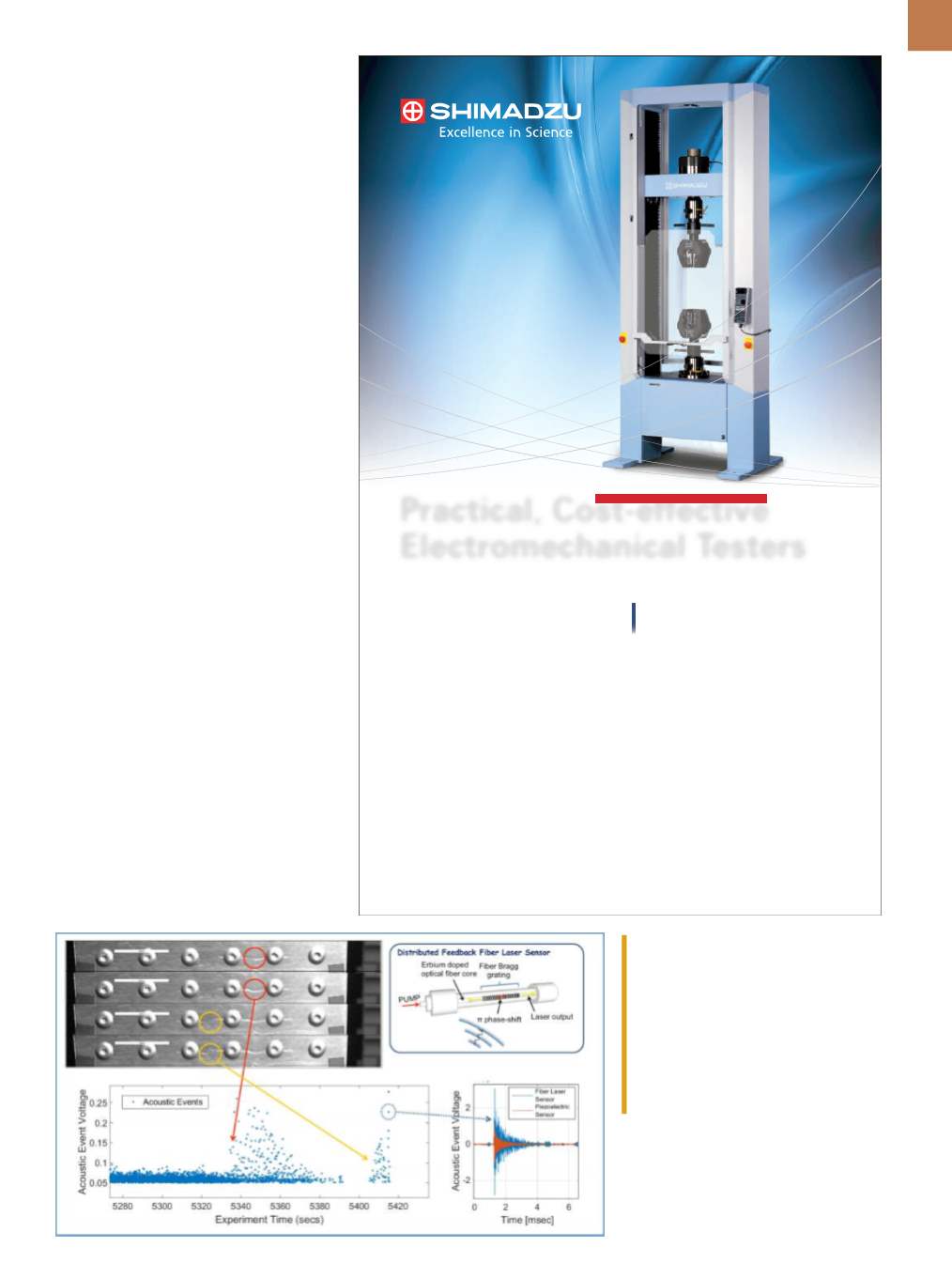

A D V A N C E D
M A T E R I A L S
&
P R O C E S S E S |
O C T O B E R
2 0 1 6
1 1
Initiation and growth of cracks between
rivets in a lap joint (top left). A fiber laser
sensor (top right) measures acoustic
emission signals generated by the cracks
and software records them as acoustic
events. A typical event is shown in lower
right plot. Amplitude of the AE events as
a function of time is shown in lower left
plot. Courtesy of NRL.
layers, such as coatings on machine
parts or pharmaceuticals.
mit.edu,
gatech.edu.
FIBER LASER SENSOR LISTENS
FOR FRACTURES
For the first time, scientists at the
U.S. Naval Research Laboratory (NRL),
Washington, used a distributed feed-
back fiber laser acoustic emission sen-
sor to detect acoustic emission from
cracks in riveted lap joints. The sen-
sor, integrated into a shallow groove
in the lap joint, consists of a single
fiber, about the width of a human hair.
Researchers installed the sensors in a
series of riveted aluminum lap joints
and measured acoustic emission over a
bandwidth of 0.5 MHz generated during
a two-hour accelerated fatigue test.
Measurements were also taken with
an equivalent electrical sensor. The
embedded sensors resolved low-level
acoustic events generated by periodic
fretting from the riveted joint in addi-
tion to acoustic emissions from crack
formation. Time-lapse imagery of the
lap joint correlated the observed frac-
ture with the measured signals.
The fiber laser sensor has acous-
tic sensitivity comparable to, or greater
than, that achieved by existing elec-
trical sensors, and its laboratory per-
formance is unmatched by any other
intrinsic optical fiber sensor. It canmea-
sure compromising impacts as well as
cracks, and could integrate with exist-
ing fiber optic strain and temperature
sensing systems. In addition to military
applications, the sensor could be used
for continuous monitoring of buildings
and bridges.
nrl.navy.mil.
Combining advanced specifications with an affordable, modern design, Shimadzu’s AGS-X Series of floor and tabletop universal testers delivers practical solutions across a wide range of applications. By incorporating multiple control options, load cells with maximum capacities from 1 N to 300 kN, and the utmost in safety considerations, the AGS-X series is the choice for easier, more efficient testing . Shimadzu’s AGS-X Series features: ■ Accurate stress-strain curves with Class 0.5 load cells ■ High-speed data sampling up to 1 msec (1 kHz) ■ Precise stress- and strain-controlled testing ■ Comprehensive safety measures ■ Easy-to-use software with a refined user interface for more efficient, effective testingShimadzu Scientific Instruments Inc., 7102 Riverwood Dr., Columbia, MD 21046, USA
Learn more. Call (800) 477-1227 or visit us online at www.ssi.shimadzu.com/AGSX Practical, Cost-effective Electromechanical Testers In addition, a comprehensive selection of grips, compression plates, jigs, extensometers, and other accessories allow configurations to be tailored to almost any application. Adaptable to Countless Applications















